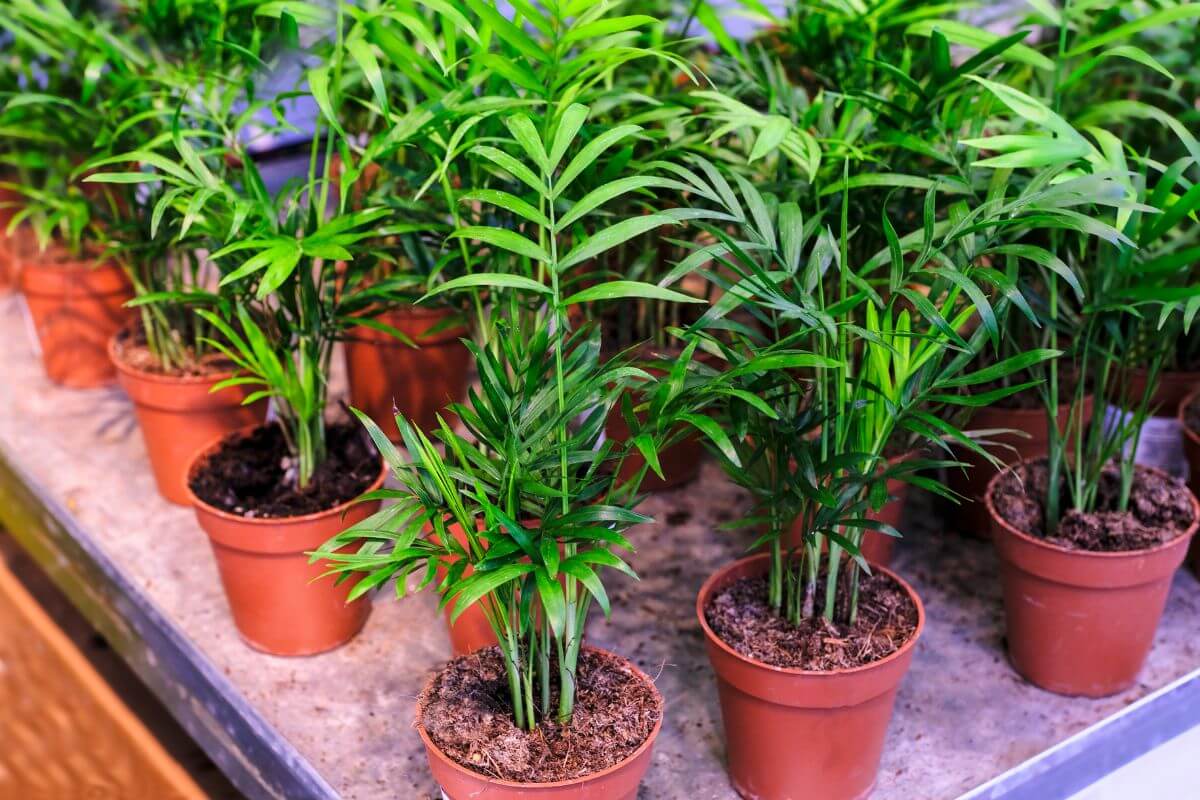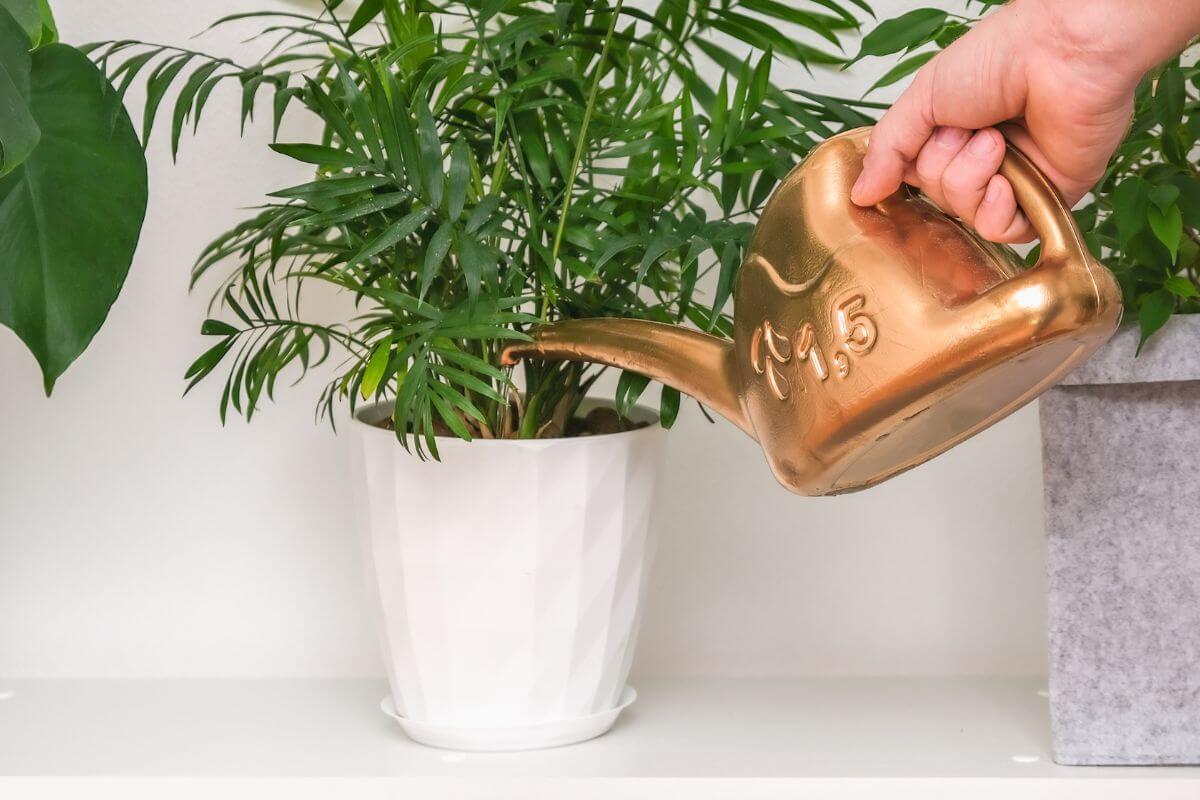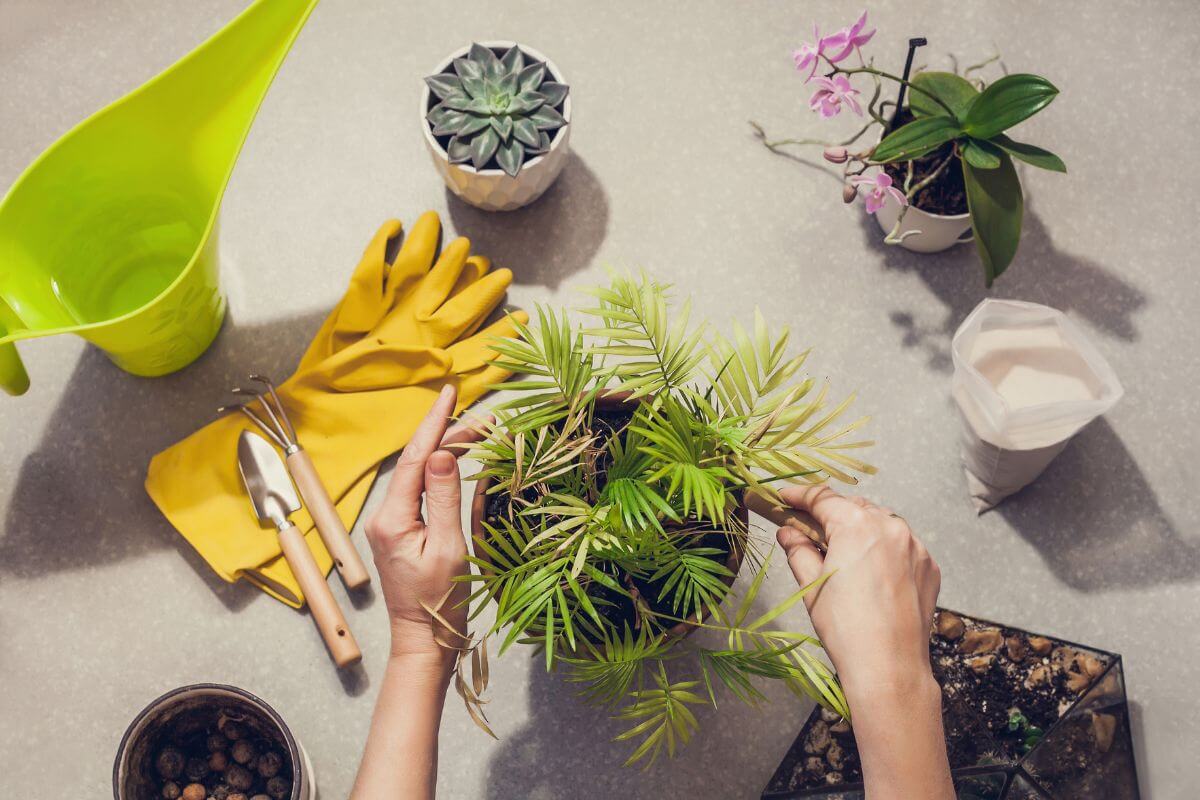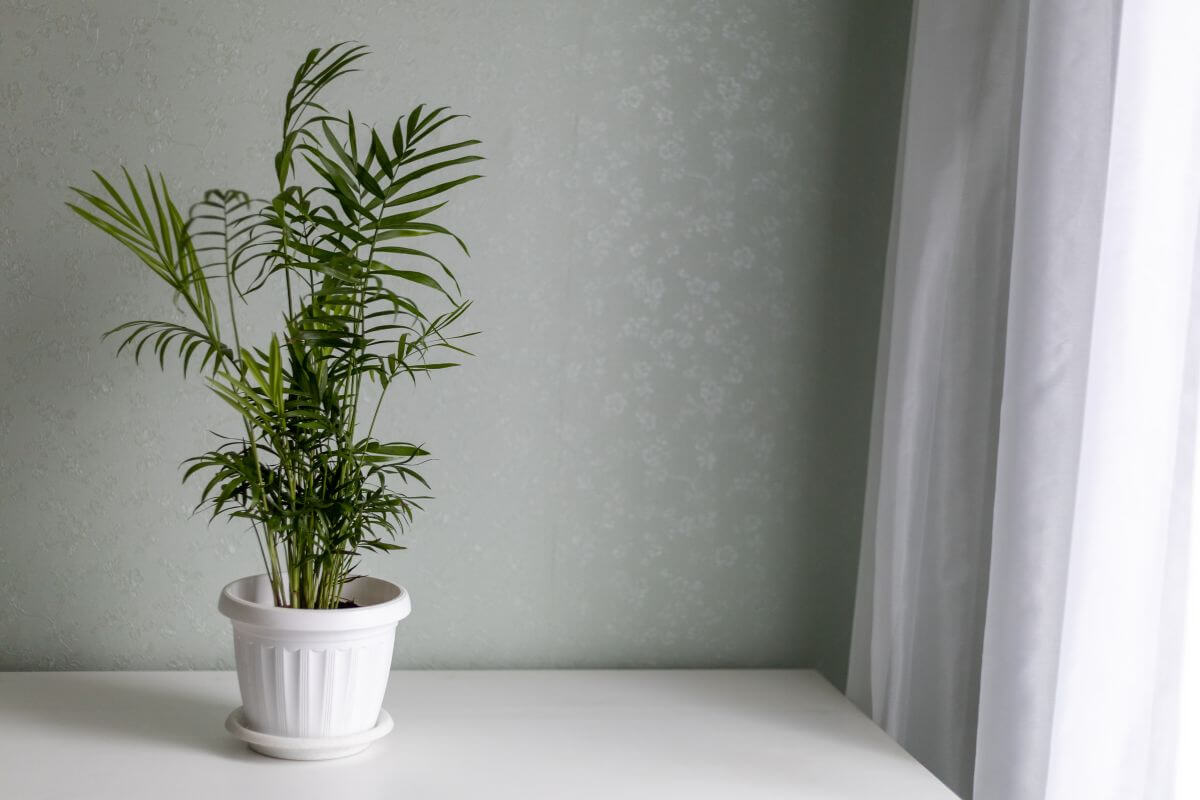The Parlor Palm tree is a beautiful houseplant addition to any home and garden. It is a hardy plant that requires minimal care.
However, there are a few things you should keep in mind with light and water if you want to grow a healthy and thriving parlor palm tree.
In this article, I will go over the basics of growing a parlor palm tree. I will also give you some tips on how to care for your parlor palm once it grows into a mature specimen.
Parlor Palm Overview

The Chamaedorea elegans, more commonly known as the Parlor Palm, is a member of the Arecaceae family and native to Mexico and Guatemala.
It is an extremely popular indoor palm because it’s a hardy plant, doing well in low-light and lower temperature conditions.
The parlor palm will grow in clumps to form a palm with deep green foliage and slim tree trunks. Occasionally, a single trunk palm may be seen, but usually, you will see these palms growing in their characteristic clump form.
The parlor palm’s leaves are often seen in floral arrangements, in wreathes, and in Palm Sunday greenery. Their leaves have a long survival rate of over a month once they have been trimmed from the palm.
Parlor palms are slow growers and may need years before they reach a mature height of 2 to 6 feet when cultivated indoors and 6 to 16 feet when cultivated outdoors.
Apart from this plant’s elegance, it is also a non-toxic plant, making it ideal for homes with children and pets.
There are a number of parlor palm varieties, among which we find:
- Chamaedorea elegans – The most popular variety and a native of Mexico and Central America
- Chamaedorea erumpens – A bamboo palm that is larger than the “elegans” and boasts fan-like leaves. It originates further south.
- Chamaedorea hooperiana – Resembles the Kentia Palm and features very large palm-shaped leaves. This is an easy variety to grow.
Parlor Palm Care Guide
If you love palms and want an indoor version, the parlor palm is great for beginner gardeners. They do well in lobbies and low-light conditions, although they will be sensitive to water.
Too much water or too much direct sunlight will place this plant’s health and well-being at risk.
Soil for the Parlor Palm
The soil for parlor palms should be well-draining and lightly moist at all times.
For parlor palm indoor cultivation, the best potting mix is one that is peat-based, however, it should not be sponge-like.
If you are cultivating the parlor palm outdoors, this plant will do well in any type of soil bed whether clay, loamy, or sandy. But it will not tolerate soil that has high salt levels.
The soil can be acidic to neutral with a pH level between 5.1 and 7.5.
Light for the Parlor Palm
While the parlor palm tolerates lower light conditions, it cannot survive without any light.
The best light will be indirect or filtered bright sunlight to encourage this plant to thrive.
Water and Humidity for the Parlor Palm

As with most palms, the Parlor Palm is sensitive to overwatering. Don’t leave it to sit in soggy or waterlogged soil. Better your palm should be a bit too dry than overwatered.
This palm can be watered when the top inch of the soil bed feels dry. If the palm’s leaves start to turn yellow, it most likely means that it’s too dry and needs water.
Chemicals in water can also affect your palm adversely, so rainwater or distilled water is recommended. Using tap water is fine too, but leave it out for 24 hours first to allow for the chlorine to dissipate before using on the parlor palm.
The parlor palm will thrive in an environment with average humidity. Dry leaf edges or brown tips may be an indication of a lack of humidity and water.
Before risking overwatering, try to raise the humidity level near the plant with a humidifier. You can also try misting your palm three to four times a week, or placing a receptacle of water near the plant to improve humidity in the area around the houseplant.
Temperature for the Parlor Palm
The parlor palm prefers its environmental temperature range to measure between 65° and 80° Fahrenheit.
It can tolerate temperatures as low as 50°F, but frost will be lethal.
Be sure to also place it away from cold drafts that could come from air conditioning vents, doors, windows, and hallways.
Fertilizer for the Parlor Palm
Since the parlor palm is a light feeder, you can feed it once or twice during its growing season with a 20-20-20 liquid fertilizer that has been significantly diluted .
Fertilizing can be avoided during the winter.
Pruning and Repotting the Parlor Palm

This palm should not be pruned as leaves grow from a terminal bud. Trimming should only be used to remove old or brown leave. If you prune, the foliage will stop growing.
Root systems in parlor palms are relatively weak, and because they are slow growers, repotting can be done every second year with great care.
If the soil bed becomes spongy in texture due to overwatering, you should repot to avoid root rot.
Propagating the Parlor Palm
The parlor palm is generally propagated from seed by professional nurseries.
While division of clumps is possible, it is not advised. These plants do not grow naturally in clumps, but do so because they are seeded in this way for aesthetic reasons.
Stem cuttings or leaf cuttings will not result in propagation. If you want another parlor palm, it is recommended that one is purchased from your local nursery or garden center, and even online.
Parlor Palm Toxicity and Pets
Parlor palms are not toxic to dogs or cats, making them an ideal houseplant for families with pets and small children.
Parlor Palm Pests, Diseases, and Problems

Parlor palms, like most houseplants, are susceptible to pests including aphids, scale insects, mealybugs, and whiteflies.
As soon as you notice an infestation, this palm should be treated immediately with a non-toxic organic solution.
Spraying foliage with warm soapy water may suffice, or for serious infestations use insecticidal soap. Solutions with alcohol should be avoided.
The parlor palm can suffer from root rot or fungal leaf spot infections because of overwatering or excess moisture.
A yellowing or dying parlor palm may indicate it hasn’t received enough water.
If the leaf tips are turning brown, it may be overwatered, be getting too much fertilizer, or are not receiving sufficient light.
Parlor Palm Care Final Thoughts
This is the quintessential houseplant for beginners and for those with little time to dedicate to indoor gardening.
Loved by interior designers, the parlor palm is versatile, low-maintenance, and will bring greenery and elegance to any home or office.
Because it’s a hardy plant, it is a must-have for the plant enthusiast without much time or significant experience in cultivating houseplants.
For more care guides on houseplants and palms, continue on to one of these guides:
Parlor Palm Care FAQs
How much sun does a parlor palm need?
The parlor palm likes bright indirect light, but can tolerate low-light as well. It doesn’t like direct sunlight as it’s too intense and will lead to browning and scorched leaves.
How do you care for a parlor palm?
Parlor palms are easy to care for once established. They need moderate watering and fertilization if needed. Plant them in well-draining potting mix, preferably peat-based.
Does the parlor palm purify the air?
Yes, the parlor palm purifies the air. The large leaves help filter out dust particles and pollen while providing shade during hot summer months.
How fast does a parlor palm grow?
Parlor palms are slow growers. In fact, some varieties take up to 10 years before reaching maturity, yielding heights of 2-6 feet indoors, and 6-16 outdoors. However, there are many different types available, each with their own growth rate.
Should I mist my parlor palm?
You can mist your parlor palm once a week if you live in a dry climate. Misting will do two things. First, it helps add humidity because the palm likes higher humidity. Second, misting will also help keep its leaves cleans.
Does the parlor palm have a spiritual meaning?
Parlor palms are thought to be lucky plants and improve the balance in the room according to feng shui. They also help to purify the air.


